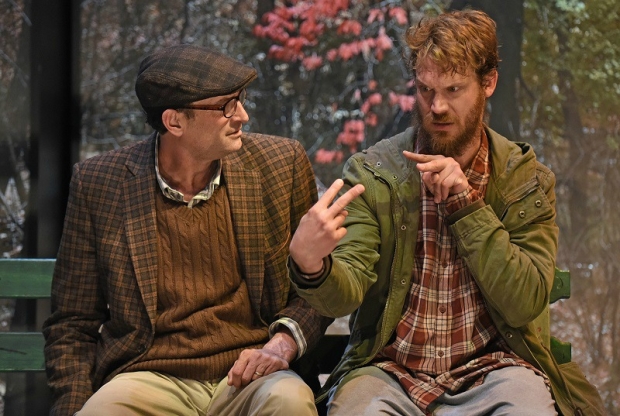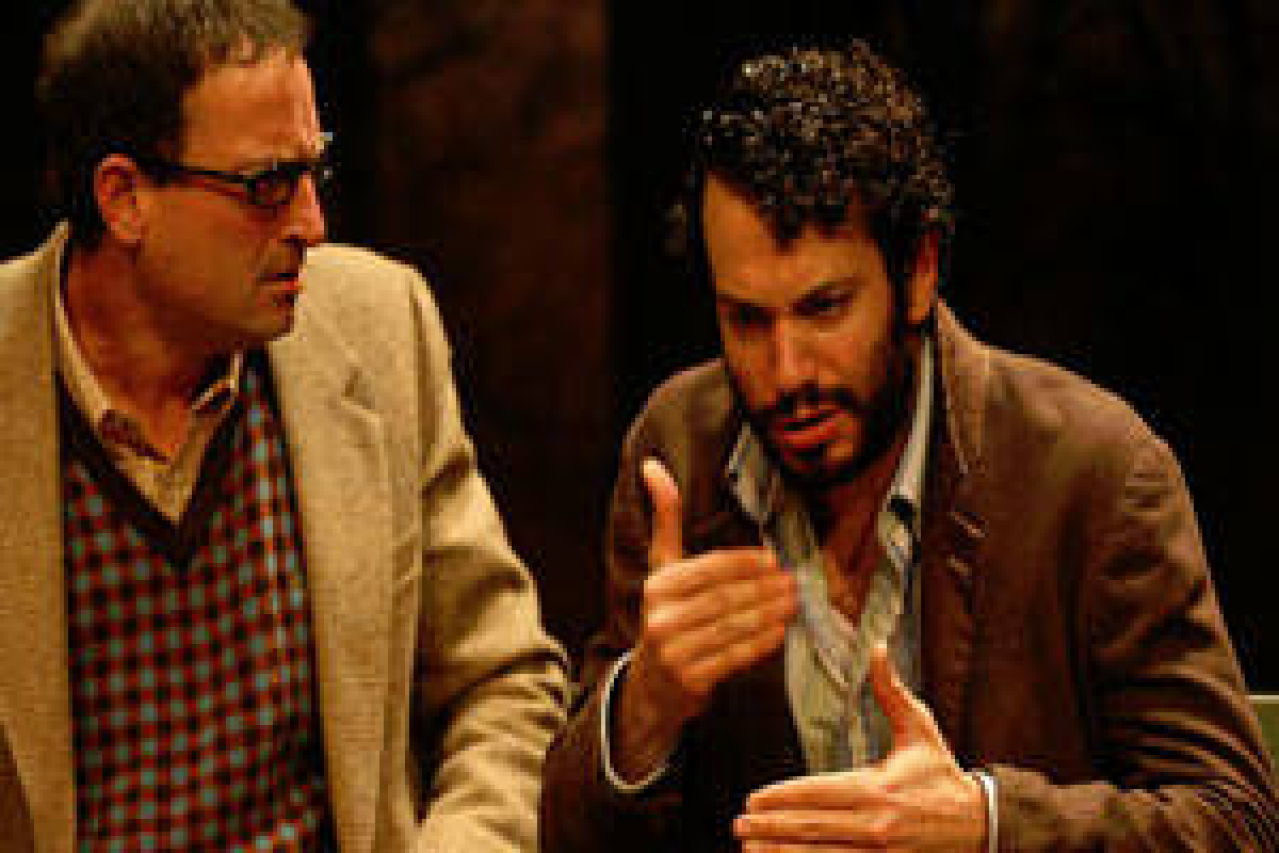At Home at the Zoo

(© Kevin Parry)
"We should talk," Ann says to her husband, Peter, who is preoccupied with marking up a textbook. A couple of eventful hours later, Ann's words are echoed when Peter, now sitting in Central Park, is approached by Jerry, a total a stranger with a similar request: "Do you mind if we talk?" In both instances, Peter says yes. But since this is the realm of Edward Albee, true honest communication is not nearly so easy. Sometimes it gets in the way of necessary baser instincts.
Albee wrote the short plays Homelife and The Zoo Story 45 years apart. When the plays are put together in a single evening, they talk to and inform each other, bookending Peter's bad day. At the Wallis Annenberg Center for the Performing Arts, Deaf West Theatre's staging of the two works, collectively called At Home at the Zoo, reaffirms not only Deaf West's proficiency with a very tricky playwright, but also the breadth of the remarkable actor Troy Kotsur. Revisiting territory he examined in 2007, director Coy Middlebrook pilots Kotsur and fellow performers Russell Harvard, Tyrone Giordano, Amber Zion, and three voice actors through a sure-handed and disturbing examination of the human animal.
Talk may be key in Albee's landscape, but the fact that Ann, Peter, and Jerry communicate through sign language is neither hindering nor at all ironic. Through musicals like Big River, Spring Awakening, and several straight plays, Deaf West's blending of deaf and hearing performers is consistently effective and quietly inventive. In the first act, Homelife, voice actors Jake Eberle and Paige Lindsey White are visible, but offstage supplying the dialogue as Kotsur and Zion duke it out. When the action shifts outdoors in Act 2 (The Zoo Story), Middlebrook puts Eberle and Jeff Alan-Lee on benches, adjacent to the action. The side-by-side configuration is never distracting, and our focus always remains where it belongs: on the deaf performers.
Homelife's premise is deceptively simple and very Albee-esque: Ann (played by Zion) returns home to their upper middle-class New York apartment (designed by Karyl Newman) and rouses her husband Peter (Kotsur) out of his work. The two talk about their marriage, which – they realize – has reached a level of stasis that both parties now find unsatisfying. Ann has taken to leaving the bed in the middle of the night, and Peter only casually wonders where she goes. When the discussion turns to their sex life, Peter is in for a revelation, which leads to his recounting a disturbing story from his own past. Although he is a kind, considerate husband, Ann reveals that sometimes she needs the opposite of kindness. "I think I was talking about being an animal," she says.
Ann tries to coax that animal out of her bottled-up husband, but she fails. Out in Central Park, Jerry — who has just come from the zoo, make a similar attempt at tapping into Peter's primal instincts, and meets with more success than Ann did. With the use of a series of panels depicting a leafy, sun drenched afternoon, Newman smoothly shifts the action outdoors.
Zion makes Ann's loneliness and frustration palpable and, at times, uncomfortable to watch. The actress brings a welcome blend of dark humor and sensuality to the role, and when she snaps, it carries the necessary shock. While Ann and Jerry never meet, their respective functions in the two acts of "At Home at the Zoo" run parallel to each other. Where Ann can exist in a world of "civilization," Jerry is far more raw.
Newman dresses Harvard practically as a homeless person, and the actor's transition from edgy to raving is certainly believable. With Alan-Lee's able vocal assistance, Harvard soldiers through Jerry's Everest-size monologue about his landlady's dog. By the time he gets to the conclusion, the actor has flailed and gyrated over the stage and is himself practically frothing at the mouth. Given the morning that Peter has already had at home, it seems unlikely that the character would remain in the company of an unhinged – if intelligent – lunatic for as long as he does. (For the final two weeks of the run at the Wallis, Jerry will be played by Tyrone Giordano, another Deaf West company regular.)
In the less showy role of Peter, the tweedy and unassuming-looking Kotsur anchors the production, with Eberle supplying sensible vocals. In Kotsur's hands, Peter shows the danger lurking behind the wimp. Here is a man who has frittered away too many hours reading boring textbooks — a man who could benefit from spending a few hours at the zoo, trying to understand how the beasts behave.
This production came together shortly after Albee died last September. With Middlebrook at the helm of Deaf West, the work remains in sure hands.











